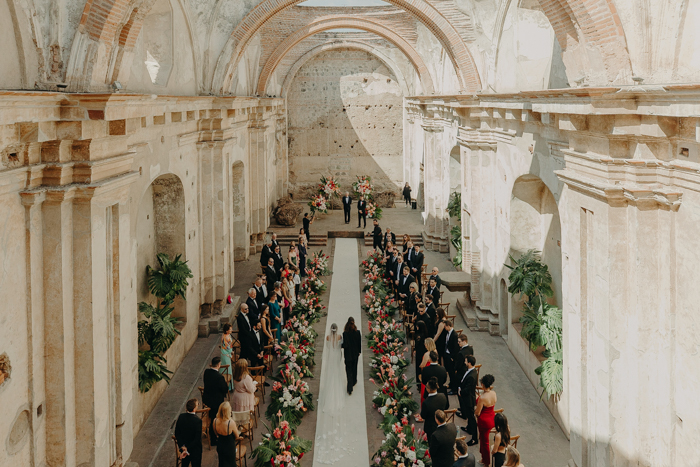
Image by Manuel Aldana. See more of this real wedding here.
A wedding ceremony is more than just exchanging vows. With so many moving pieces, it’s crucial to iron out the details well before walking down the aisle. That’s why many host a rehearsal dinner the day before to make certain that everyone is on the same page. Having a clear wedding ceremony timeline also helps to ensure that everyone knows their role—from the officiant and DJ to key family members, the wedding party, and, of course, the couple.
A clear timeline to refer back to is essential. But there tends to be a lot of confusion when it comes to actually creating a timeline. What comes first? How many readings should you incorporate? When does the unity ceremony take place? These are all valid questions. That’s why we’ve put together a traditional wedding ceremony timeline for you to reference. But keep in mind every wedding is unique, including the timeline and script.
This guide can help you decide what to keep and what to skip. We’ve also included some tips on how to personalize the script, ensuring it authentically reflects your love story and vision for the day.
Wedding Ceremony Timeline
1. Guests Get Seated
At any ceremony, the first step is always guiding guests to their seats. You can hire ushers or dedicate vendors–like your wedding planner–to take on this role. You can also rely on signage to direct your guests to the correct places. Traditionally, important family members like grandparents, parents, and siblings are included in the processional, so reserve the first row for them.
2. Processional Begins
Just before the procession begins, your officiant will take their place. When the music starts, it’s the first partner’s cue to walk down the aisle, followed by important family members like grandparents, parents, and possibly siblings. Then comes the wedding party. Bridesmaids and groomsmen can choose to walk down separately or pair up—it’s your call. Once everyone is in position, the music will change, guests will rise, and the next partner will make her grand entrance down the aisle.
Recommended Reading: Unique Wedding Processional Songs for Walking Down the Aisle in Style
3. Opening Remarks From the Officiant
Once everyone is settled, the officiant will say a few words to welcome and thank everyone on behalf of the couple. This part of the ceremony is typically short and heartfelt. In religious ceremonies, the officiant may also include a prayer.
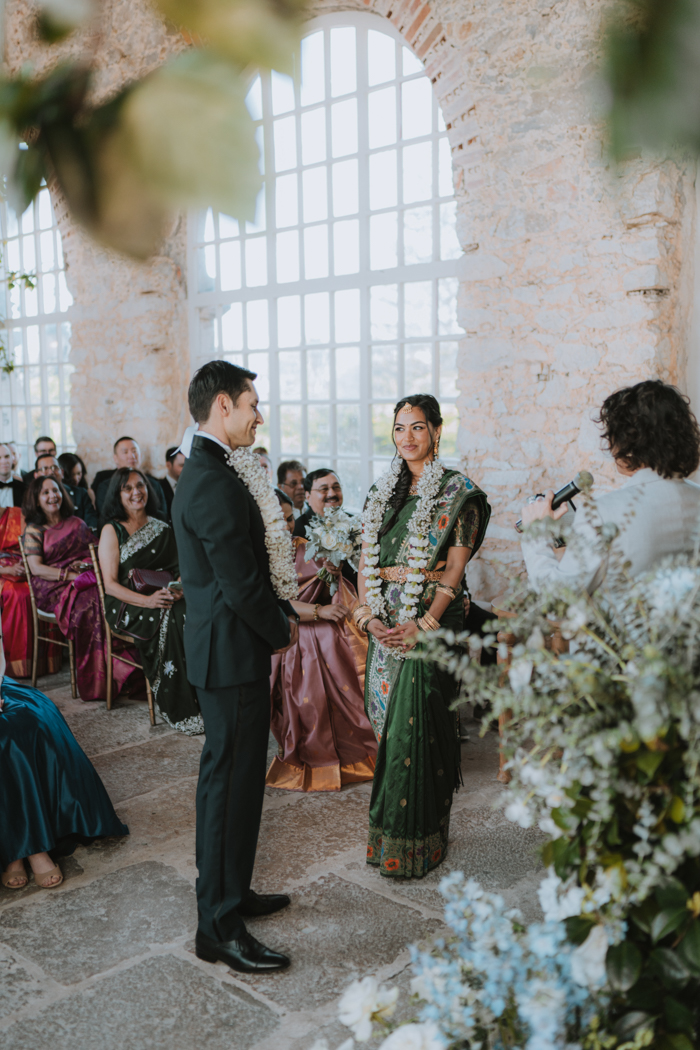
Image by Memorelle. See more of this real wedding here.
4. Readings
This part of the ceremony carries special meaning, which is why couples often have a trusted officiant or a close family member conduct the readings. Whoever you choose to deliver these heartfelt words, it’s essential this section is tailored to reflect your relationship.
The readings you select will be influenced by whether your wedding is religious or not. For religious ceremonies, readings can come from sacred texts like the Bible or Torah. However, in non-religious ceremonies, readings can be poems or personal anecdotes. It’s all about choosing sweet words that resonate with you both.
Recommended Reading: LGBTQ+ Ceremony Scripts and Readings
5. Exchanging of Vows
You and your guests are going to want to have tissues handy for this emotional part of the wedding ceremony. The exchanging of vows is an intimate moment where you both express your commitment to each other. You have the option to recite traditional vows provided by your officiant or fully personalize the ceremony by writing your own vows.
We’ve also seen many couples opt to read their vows privately before the ceremony, often during the first look. This can be a great option for those who aren’t comfortable wearing their heart on their sleeve for all their loved ones to see. There’s no right or wrong way to do it. It’s truly all about what feels most authentic to you as a couple.
Recommended Reading: Get Inspired By These 30 Touching Wedding Vows Examples
6. Include a Unity Ceremony in Your Wedding Ceremony Timeline
A unity ceremony is an optional wedding tradition that symbolizes two lives coming together as one. Oftentimes, it’s a ritual with religious or cultural significance, though this isn’t always the case. Whether you go the traditional route or in a unique direction, this is still an extremely special way for a couple to personalize their wedding. It adds a sweet and sentimental touch that beautifully represents your love.
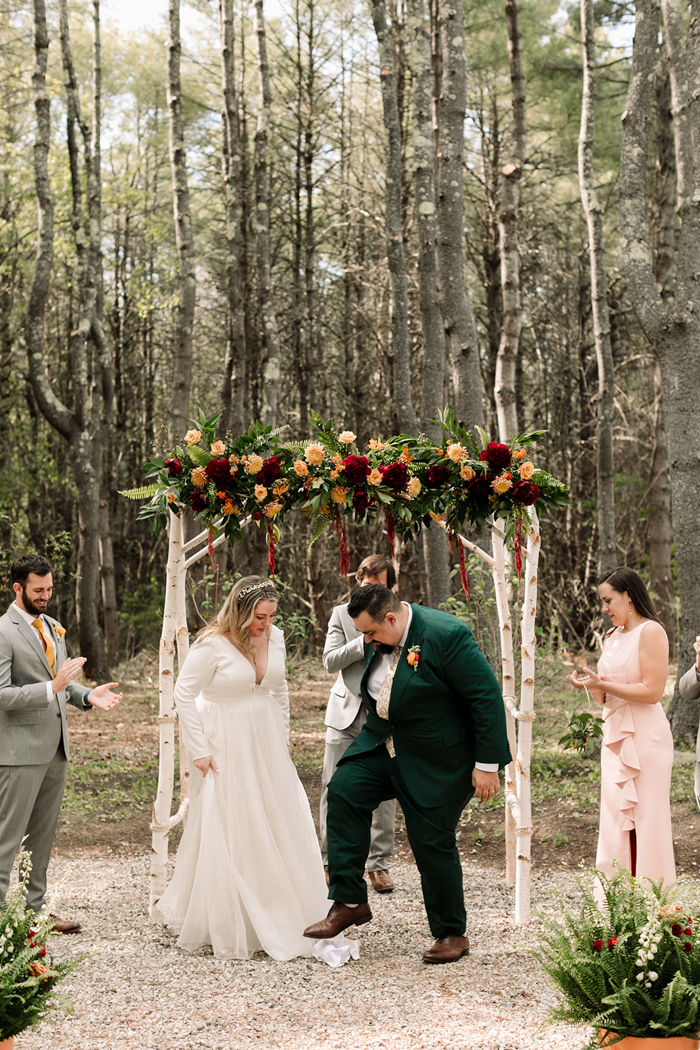
Image by Henry and Mac. See more of this real wedding here.
7. Ring Exchange
After exchanging all the heartfelt words, it’s time to exchange wedding rings. Your officiant will guide you as you each slip the ring onto each other’s fingers, one at a time. These rings symbolize your love and commitment that you’ll proudly wear long beyond your wedding day.
If you want to ditch physical jewelry altogether,, get matching wedding ring tattoos—a one-of-a-kind wedding detail that challenges tradition.
8. Pronouncement and First Kiss
“I now pronounce you…” are the magical words everyone’s been waiting for. This is the moment when you’re officially recognized as a married couple. It’s time for your first kiss as newlyweds and time to soak up the excitement from your guests before making your grand exit from the ceremony space.
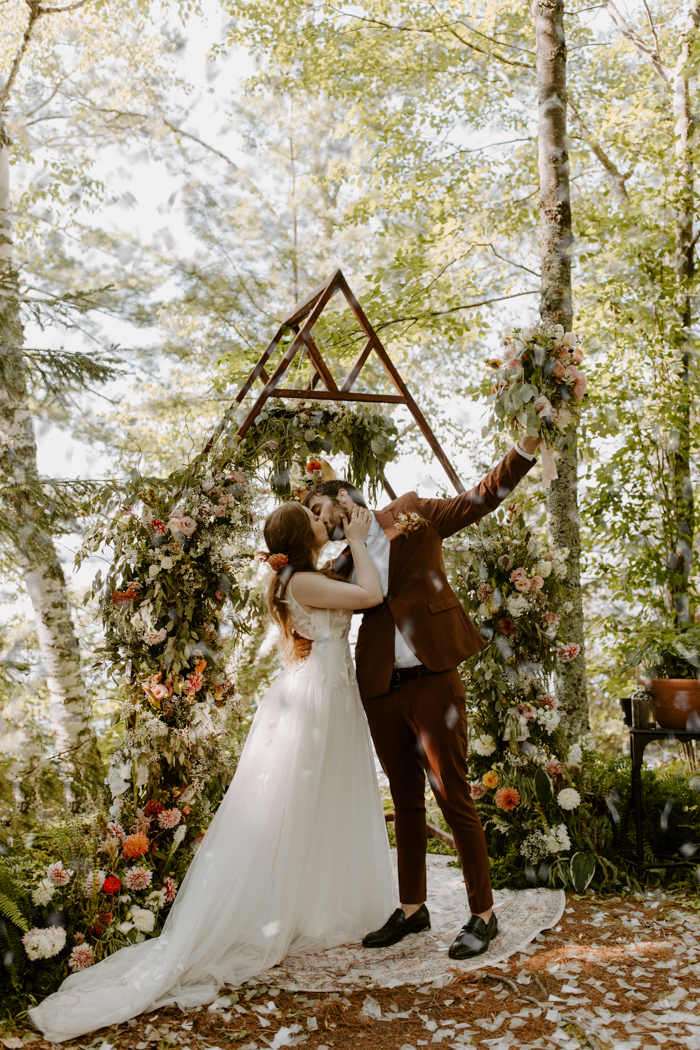
Image by Skyler & Vhan Photography. See more of this real wedding here.
9. Recessional
The recessional marks the grand finale after your officiant declares you married. This kickstarts the walk back down the aisle. First, the newlyweds lead the way, followed by their wedding party. To add an extra touch of magic to the moment, consider having guests toss petals or confetti to create a stunning photo opportunity.
Recommended Reading: The 70 Best Wedding Recessional Songs
Tips for Personalizing the Script
After breaking down the traditional ceremony timeline and its components, it’s time to consider how you can elevate your script. Since there’s no one-size-fits-all ceremony, we’re leaving you with some tips to ensure your script is tailored to you and your unique love story.
1. Have a Family Member or Friend Officiant
No one knows you better than your loved ones. So, having someone close to you officiate your wedding can add an incredibly personal touch to your ceremony. This individual knows you both inside and out, allowing them to convey your love beautifully.
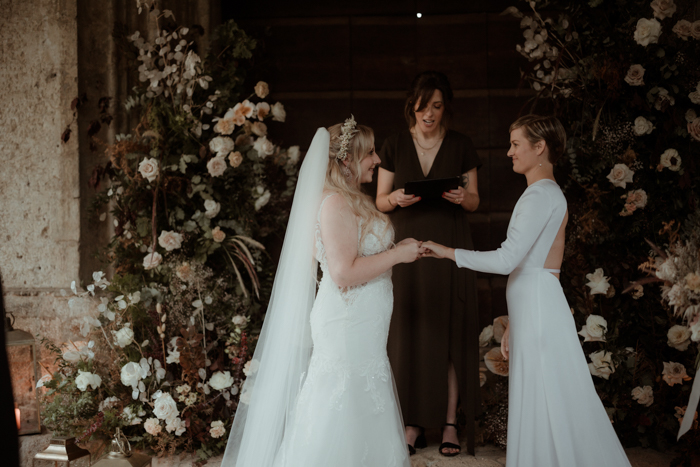
Image by Andrea & Federica. See more of this real wedding here.
2. Get Loved Ones Included During Processional
There are no rules when it comes to your wedding. So, if you want to include more special people in your processional, do it. You can have your dog play ring bearer, your grandma be the flower girl, etc.
3. Write Your Own Vows
Writing your own vows is a powerful way to add meaning to your ceremony script. It’s your opportunity to pour your heart out, vocalizing why you’ve fallen for this person. You can also share personal stories that brought you to this moment at the altar. It’s your chance to scream your love from the mountaintops for all to hear.
4. Trade Traditional Readings for Personal Anecdotes
Sharing letters expressing why you love each other and memorable stories gives your officiant insight into your relationship. By incorporating these anecdotes into the readings, they can add an extra layer of personalization to your ceremony script.
5. Use Music to Enhance Your Ceremony
Music sets the tone for your wedding day, including your ceremony. Your choice of processional and recessional songs can personalize the moment. So, when making your music selections, carefully consider your playlist. Make sure only to pick songs that resonate with you and your partner.
6. Get Guests Involved
Get your guests involved during the ceremony by including something like a ring-warming ceremony where the rings are passed around to all of the guests to bless before they’re exchanged by the couple.
No wedding is alike, making it difficult to navigate the planning process at times. While our wedding ceremony timeline guide is a helpful starting point, it’s worth considering hiring a wedding planner and officiant to fine-tune these details for you. They’ll play a key role in crafting a timeline and script that truly reflects your love story and vision for the day.
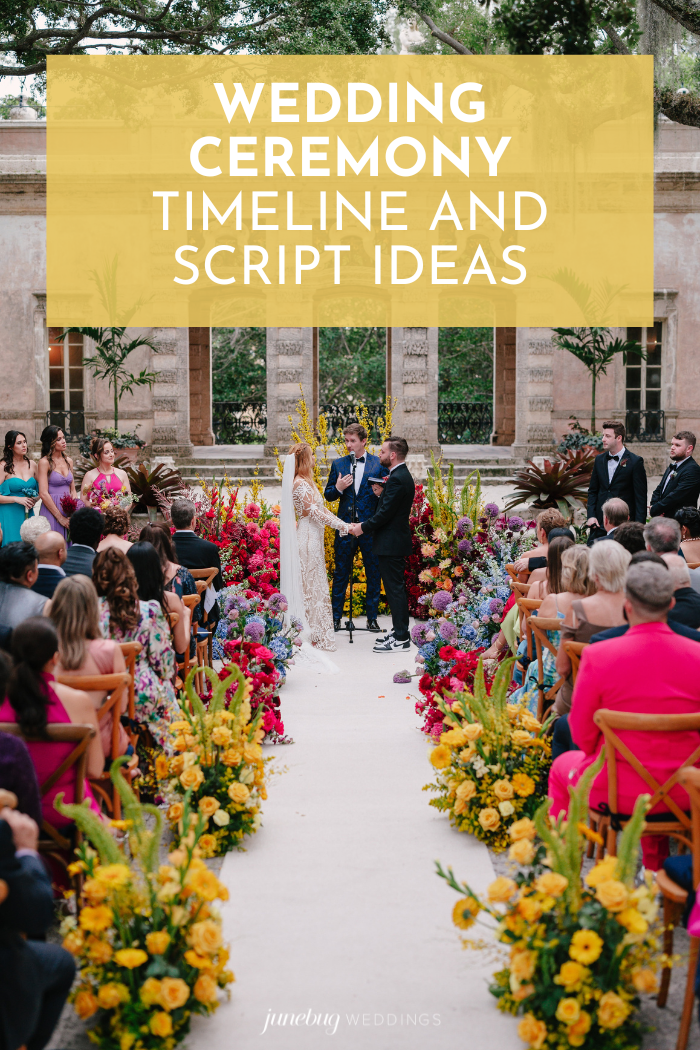
Image by Evan Rich Photography. See more of this real wedding here.















.jpg)



